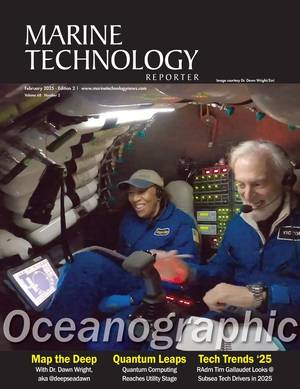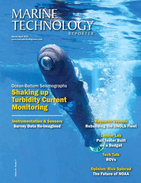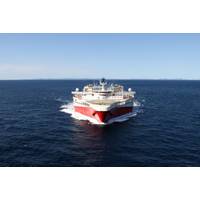
PGS Expands Seismic Survey in Egypt’s West Mediterranean
to enable better understanding of shelfal and transform margin potential at the western extremity of Egypt’s offshore area.EGY24 Nefertiti draws on the expertise of partner the Egyptian Natural Gas Holding Company (EGAS) and the capabilities of PGS’ Ramform fleet and GeoStreamer broadband technology.The survey location is near to the Sidi Barrani-1 well, and target reservoirs in the area are likely to be Sidi Barrani/Alam El Bueib Formation (Barremian age) sandstones and Middle Jurassic Khatatba Formation sandstones within structural traps.The new dataset is relevant for companies seeking
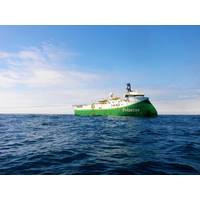
Neptune Launches Petrel Seismic Campaign
for the area. We look forward to working closely with our partners as we deepen our knowledge of Petrel in order to define the potential for further development.”Neptune holds 54% of the project and alongside its partners Santos (40.25%) and Beach Energy (5.75%) is investing in new broadband technology over an expanded area in order to get a better understanding of the significant potential resources that Petrel holds.Polarcus noted it has secured approval for an Environmental Plan allowing acquisition of new 3D multi-client data to be acquired across the field.The Polarcus Asima vessel
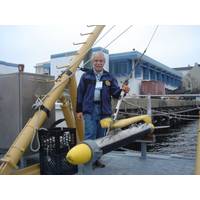
Klein's Side Scan Sonar, Then and Now
about these developments, but we are very focused on bringing them to the market. You mentioned earlier the focus on producing photo-quality imaging. Will you discuss some of the evolutions that have recently taken place in this area? FC: Most of our new products are based on broadband technology which allows the image to have a much deeper, richer, tonal quality. Complementing this architecture is a number of signal and display processing improvements which further enhance the imagery. Where do you see the greatest opportunities for growth? FC: From our perspective
PGS : Building Further Success in Newfoundland, Labrador
recently completed the fifth consecutive acquisition season offshore Newfoundland and Labrador as part of the ongoing joint venture (JV) with TGS. The successful 2015 season was the biggest yet with PGS operating four vessels, two 3D and two 2D vessels, all of them equipped with GeoStreamer, PGS' broadband technology. This season marked the commencement of the first MultiClient 3D programs to be acquired by the JV, as well as continued building of the regional MultiClient 2D library coverage. There were a number of other "firsts" associated with this year's seismic season: * First MultiClien
Broadband Seismic for Enhanced Pre-salt Imaging
almost a decade for the first deepwater wells to be drilled offshore Brazil and these were targeting post-salt prospects. Only after the turn of the century did seismic surveys begin to deliver higher quality data needed for deepwater pre-salt formation analysis, and only around 2004-2005 was the Broadband technology first applied to seismic surveys in the Santos Basin, which led to the discovery of the Lula field (at the time named Tupi). By then the quality of the seismic data allowed, Petrobras and partners to confidently commit to the hugely expensive drilling of the first pre-salt pilot well. Before
CGG Nets Quartet of BroadSeis-BroadSource Marine Contracts
French Firm CGG announced today that it has been awarded contracts for the 3D seismic acquisition of four major surveys using its BroadSeisTM with BroadSourceTM, marine broadband technology. The four surveys represent a total contract value of over 80 million USD. Three of the surveys have been awarded in the Asia-Pacific region, with two offshore Malaysia and one offshore NW Australia, while the fourth is to be acquired offshore West Africa. Jean-Georges Malcor, CEO, CGG, said: "Only CGG’s BroadSeis-BroadSource technology delivers full-bandwidth broadband data. These
TGS Gets Multi-Year Offshore 2D Seismic Contract
with its accompanying strong customer support is confirmation of TGS' strategy in growing our library in this region over the past several years," commented Stein Ove Isaksen, Senior VP Eastern Hemisphere for TGS. Data processing will be performed by TGS using its proven proprietary broadband technology, Clari-FiTM. TGS add that the first season of data will be available to clients in Q1 2015. The survey is supported by industry funding.
TGS Begins Seismic 3D Survey West of Scotland
3D library in the region, bringing the total volume of recent TGS 3D in the area to more than 17,500 km2. The broadband seismic data will be acquired by the M/V Polarcus Naila towing 12 streamers at 6,000 m cable length. Data processing will be performed by TGS using its proven proprietary broadband technology, Clari-FiTM. Initial data will be available to clients in Q4 2014. "TGS is pleased to announce the industry's first 3D data over the Brendan Basin in UKCS Quad 219" commented Stein Ove Isaksen, Senior VP Eastern Hemisphere for TGS. "This confirms our strong presence
TGS Announces 2 projects in the Norwegian Barents Sea
of TGS long offset 2D grid in the Barents Sea, adding 6,600 km to the existing data library. The survey will cover the Eastern part of the Norwegian Barents Sea, including the newly opened area in the former disputed Norway-Russia zone. M/S Academik Shatskiy will acquire the data utilizing broadband technology. Data processing will be performed by TGS using its Clari-FiTM broadband processing technology and final data will be available to clients from Q4 2014. The surveys are supported by industry funding. TGS
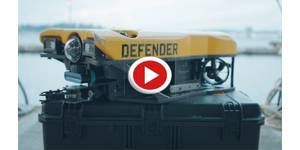

 February 2025
February 2025
